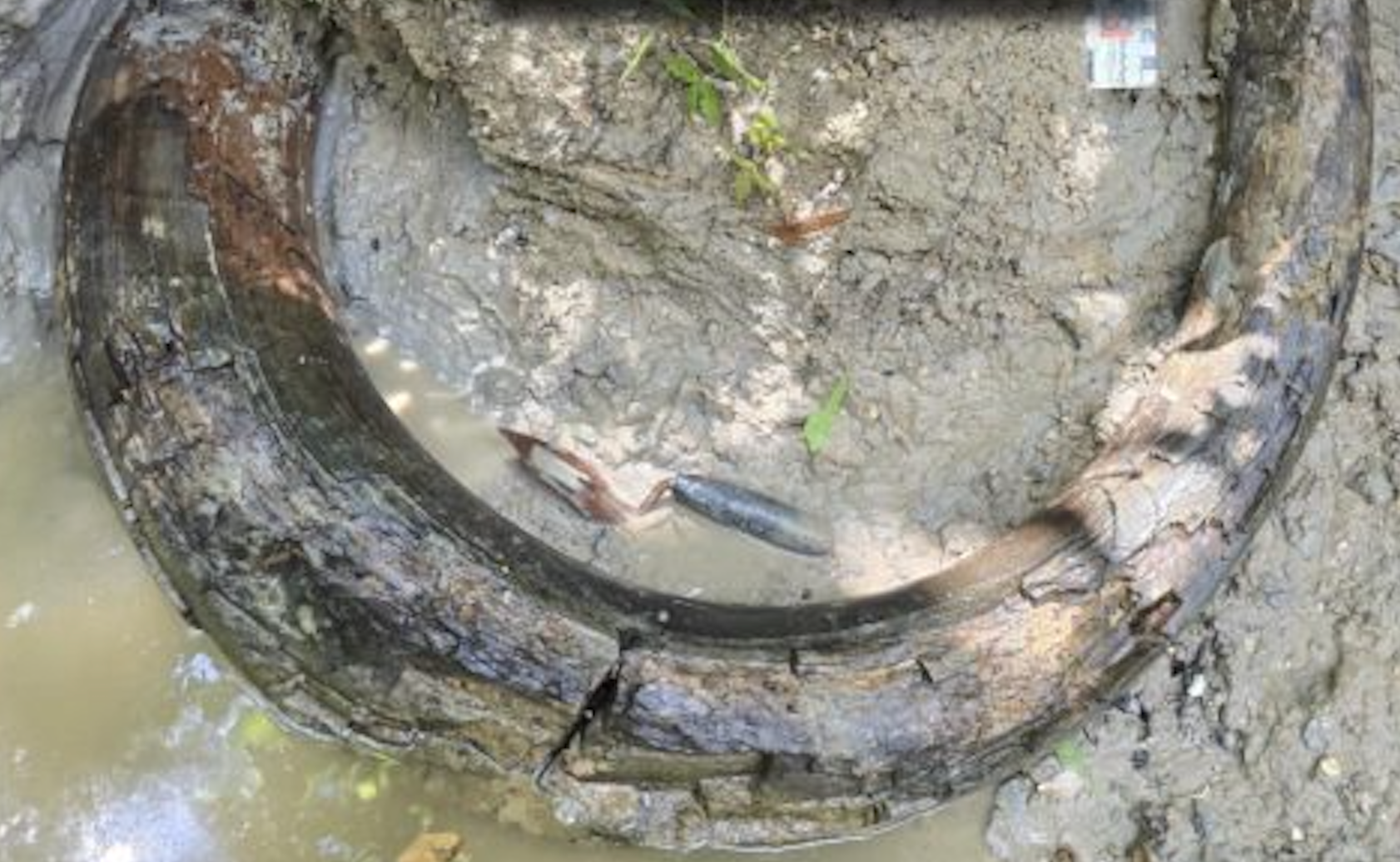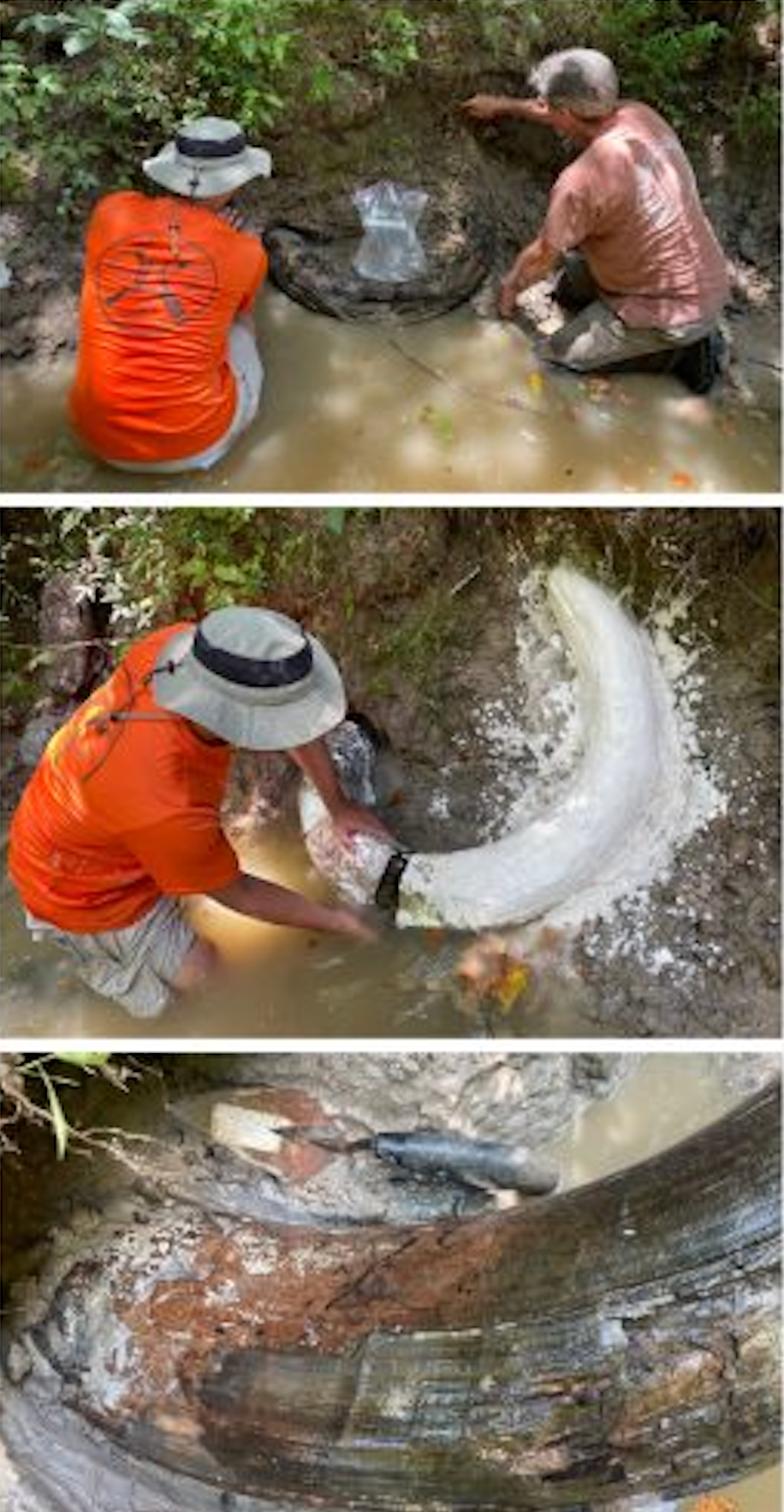Amateur fossil hunter uncovers 7ft-long fully intact giant mammoth tusk near Mississippi stream
Tusk offers rare window into Columbian mammoths that once roamed modern-day Mississippi, scientists say
Your support helps us to tell the story
From reproductive rights to climate change to Big Tech, The Independent is on the ground when the story is developing. Whether it's investigating the financials of Elon Musk's pro-Trump PAC or producing our latest documentary, 'The A Word', which shines a light on the American women fighting for reproductive rights, we know how important it is to parse out the facts from the messaging.
At such a critical moment in US history, we need reporters on the ground. Your donation allows us to keep sending journalists to speak to both sides of the story.
The Independent is trusted by Americans across the entire political spectrum. And unlike many other quality news outlets, we choose not to lock Americans out of our reporting and analysis with paywalls. We believe quality journalism should be available to everyone, paid for by those who can afford it.
Your support makes all the difference.An amateur fossil hunter has uncovered a 7 ft-long, fully intact mammoth tusk in a creek near a Mississippi river stream, a world-first discovery that sheds more light on the region’s ecology during the last Ice Age.
While fossils of the closely related mastodon have previously been found across the state, remains of mammoths which are closer cousins of modern elephants, are far less common.
Researchers found that the fossil tusk was in good condition, only partially exposed just above the water.
The giant tusk’s strong curvature suggested it belonged to a Columbian mammoth and not one from the more common mastodon – making the discovery the first of its kind for the area.
These mammoths, growing to about 15ft at the shoulder and weighing over 10 tons, were much larger than the woolly mammoth that roamed the colder, more northern regions of North America and Europe.

Until now, most fossil tusks found around the state have just been ivory fragments attributable mostly to the more common mastodon.
Analysis of the sediments surrounding the fossil suggests the mammoth tusk specimen was likely leaning up against the edge of an ancient river sandbar with a portion of it resting on the streambed floor.
At some time in the past, researchers suspect a major flooding event led to the fossil getting completely covered with alluvium, entombing the tusk.
“The animal likely had died nearby, and its remains were then carried along the stream’s channel,” researchers wrote.
Researchers also analysed gravels preserved in the alluvium and found that it was dominated by the mineral quartz, hinting that the likely source of the fossil was from a point in the Pearl River as it crosses the Jackson Prairie region.
Thus the tusk offers a rare window into Columbian mammoths that once roamed modern-day Mississippi’s Madison County along the Jackson Prairie.

Unlike mastodons, which inhabited a range of environments like modern-day deers, the Columbian mammoths were open grassland grazers, suggesting that the site of fossil discovery was part of prairie lands.
These giant beasts played a key role in maintaining the rich fertile prairie ecosystem – one of the reasons why some scientists and investors think resurrecting and bringing the mammal back from extinction can help combat climate change.
The grasslands were also home to herds of now-extinct horses, giant bison, large ground sloths and tortoises, as well as tapirs during the period.
Ice Age predators, including dire wolves, sabre-toothed cats, the American lion, and even some of the continent’s earliest human inhabitants lived in the region, scientists say.

Join our commenting forum
Join thought-provoking conversations, follow other Independent readers and see their replies
Comments